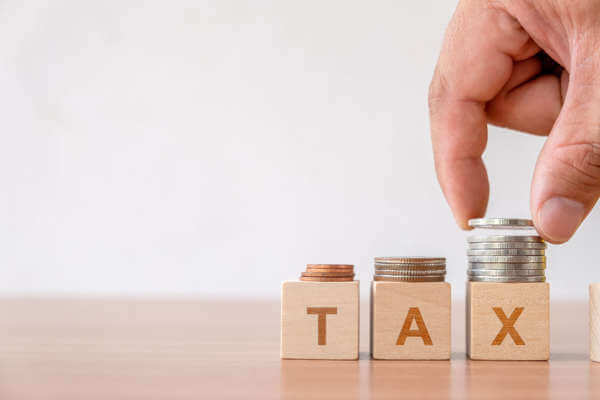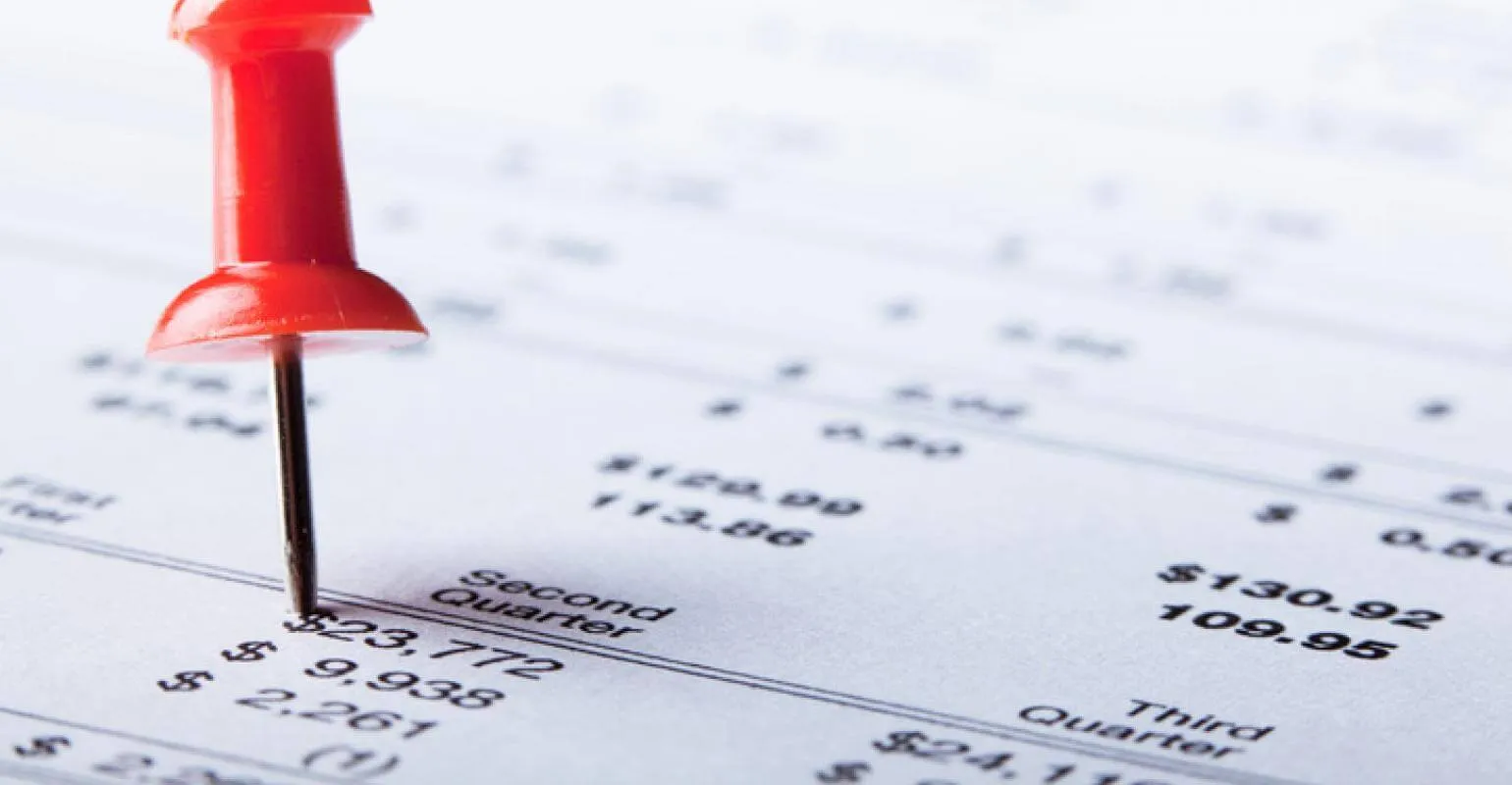Quarterly taxes are tax obligations are associated with anyone the IRS considers to be self-employed. While it is possible to pay the actual amounts due, most people opt to make estimated income tax payments based on prior-year income. As with all IRS regulations, there are some conditions to keep in mind if using prior-year income as well as information on what happens if you pay quarterly taxes late.
Are You Required to Pay Quarterly Taxes?
If the IRS considers you to be self-employed then you are required to file quarterly taxes. There are several different scenarios that can lead the IRS to consider you as self-employed and some of them might be surprising if you also have a full-time job where you receive a W-2 at the end of the year. Single-member and partnership LLCs must pay quarterly taxes as well.
Note: If you want filing reminders so you don't miss deadlines and receive unnecessary penalties, try Bonsai Tax. Not only will our app keep you on top of quarterly taxes and filing your 1099, it can help you save a ton of money at the end of the year. Our software tracks, organizes, and stores receipts for tax deductions. Users save on average of $5600. Claim your free trial for 14 days today.
Scenario 1: Self-Employed/Independent Contractor
This scenario is fairly straightforward. If you carry on a trade or business as a sole proprietor or independent contractor then you are classified as self-employed. The only potential for confusion is determining if you are an independent contractor if you do not consider yourself self-employed.
The easy test to determine if you are an independent contractor is if there is an employer-employee relationship. If you have an employer and you receive a W-2 then you are not an independent contractor. While this may seem clear there are numerous cases where an "employer" will say you are an independent contractor when you are not.
You are not an independent contractor if you perform services that can be controlled by an employer. This means if the payer controls what will be done and how it will be done you may be an employee - even if the original agreement was meant to be an independent contractor arrangement. Fundamentally, what matters is the employer has the legal right to control the details of how the services are performed.
Scenario 2: You Are a Member of a Partnership
If you are a member of a partnership then you must file quarterly tax payments. A partnership is a relationship between two or more people to do trade or business. To be a partnership each person must contribute money, property, labor, or skill. You must also share in both profits and losses. While a partnership does file end-of-year tax returns, it is up to you as an individual to pay estimated quarterly taxes.
Scenario 3: You Are Otherwise in Business for Yourself (Including a Side Hustle)
This is the situation that has the potential to trip up most people. It is easy to determine if you are self-employed if you receive no W-2 wages but when does a part-time business or side hustle require quarterly estimated tax payments? The general rule is if you expect to owe more than $1,000 when you file your annual return then quarterly tax payments should be made.
If you want to avoid making an estimated tax payment you can adjust the taxes withheld by your employer to compensate for the amount due during the tax year. While this will mean smaller net paychecks it will alleviate the burden of filing quarterly tax payments. It will also reduce the amount owed on your annual tax return.
.jpeg)
Financial Guidelines Regarding Estimated Taxes
Along with considering whether the IRS considers you as self-employed, your financial situation will also determine if you are required to pay estimated taxes. If both of the below apply, then you will be required to file estimated tax payments.
- You expect to owe at least $1,000 in federal taxes after subtracting any tax withholdings and applicable refundable credits
- Your federal withholding and refundable credits are expected to be less than the smaller of:
- 90% of the tax shown on your current year federal tax return
- 100% of the tax shown on your prior year federal tax return
Who Does Not Have to Pay Estimated Taxes?
Along with adjusting your W-2 tax withholdings there is also an additional set of conditions which may allow you to avoid paying estimated taxes. You can avoid this if you meet all of the following conditions:
- You had no tax liability in the prior tax year. This means in the prior year your total tax was zero or you did not have to file an annual return.
- You were a US citizen or resident for the entire calendar year.
- Your prior tax year covered a 12 month period (this typically applies to the partnership scenario).
How to Pay Quarterly Taxes
There are three common questions related to how to pay quarterly taxes. How to figure out the amount to pay; When to pay quarterly taxes; How to pay your quarterly taxes. To see how much taxes you'll owe, try Bonsai's free self-employment tax calculator tool.
How to Determine Your Estimated Tax Payments
The first step to making an estimated tax payment is determining how much should be paid. If you go to the IRS website, you will be instructed to use Form 1040-ES to determine your estimated payment. Without diving into the details of the form, essentially you will determine your expected adjusted gross income, taxable income, taxes, deductions, and created for the year. Most people can use the prior-year tax return as a guide. It is vital to set money aside for 1099 taxes to pay these quarterly taxes on time.
If you notice that your estimates or too high or too low then you can use Form 1040-ES to adjust your estimated payment amounts. It is critical to remember that you may need adjustments due to changes in your own financial situation as well as adjustments to the tax laws.

When to Pay Quarterly Taxes
As the same implies, you will pay your estimated taxes on a quarterly basis. The due date for quarterly tax payments is as follows:
- April 15th
- June 15th
- September 15th
- January 15th
These payment dates are based on the prior quarter earnings. For example, the April 15th due date is based on taxable income earned from January 1 to March 31. As with all tax payments, if the due date falls on a weekend or holiday, the actual deadline is extended to the next business day. Try Bonsai Tax for updated reminders on when your payments are due.
How to File and Pay Quarterly Taxes
There are several different methods of paying your quarterly self employment tax. None of the options are better or worse than any other. It all depends on your situation and preferences.
Apply Your Prior Year Tax Refund to Your Current Year Taxes
This strategy is straightforward. You can pay all or a portion of your estimated taxes for your current year but applying last year's tax refund towards it. This means you won't get a refund deposited in your bank account but it could cover one or all of your estimated payments, depending on your refund amount. You can eliminate some of your filing requirements which saves time if you are doing it yourself or money if you are paying a tax preparer to file payments for you.
Submit Payments Online
Another option is to pay all of your estimated taxes online. As with all federal tax payments made during the year (such as payroll taxes) you can use the Electronic Federal Tax Payment System (EFTPS) website. This is not only an easy way to pay your taxes it also eliminates the need to mail in a 1040-ES form.
Submit Payments with Form 1040-ES Via Mail
As with a majority of tax payments, you can make the estimated payments by mailing a check and including the appropriate form. For this type of payment, the correct form is the 1040-ES. The 1040-ES is not just a required form but will also help you calculate what is due for each quarter.
Do Not Submit Payments and Pay the Balance With Your Annual Tax Return
This option is essentially not paying your estimated taxes. Instead, you will pay the actual balance due at the end of the year. While this is an option, there are some things to consider before choosing this route as it inherently applies the quarterly payment regulations were intentionally ignored in most cases.

What Happens If You Pay Quarterly After the Due Date?
When it comes to estimated taxes the idea of "late payment penalties" isn't as straightforward as it sounds. For estimated taxes, if it is paid after the due date it is applied to the next quarter by default. For example, if your second quarter payment is two weeks late the payment is applied towards the third-quarter payment. You will then receive a notice from the IRS informing you of the estimated tax penalties and fees.
What Causes an Underpayment Penalty?
For a tax underpayment penalty to apply both of the following must apply to your situation.
- You don't make any estimated tax payments during the year.
- The amount withheld from all other income sources (such as a W-2 employer) is less than 90% of your tax bill at the end of the year.
How Does the IRS Determine Your Penalty?
The Internal Revenue Service has a specific system to determine your penalty. When you file your annual tax return, they will calculate how much you should have paid for each quarter. Next, they will apply the penalty rate (a pre-set percentage) to determine the penalty for each quarter. Finally, the penalty amount for each quarter is totaled to determine the final underpayment penalty due.
Should You Allow the IRS to Calculate the Penalty Amount?
If you know you have already underpaid your estimated tax obligations then there will be no difference between you calculating the penalty amount and the IRS calculating the amount. The IRS will calculate the amount for you if:
- You did not withhold enough during the year
- Any of the exceptions do not apply to your situation
- You did not file Form 2210 during the tax year
The key to letting the IRS determine the penalty amount for you is making sure you make the payment by the stated date on the IRS letter.
When to File Form 2210 to Reduce Your Payment
Form 2210 may allow you to lower your payment. There are very specific scenarios outlined in Form 2210 which will allow you to reduce your payment. If you are filing Form 2210 and have questions as to whether any of the outlined situations apply then consulting a tax preparer is likely the best option to determine if you would qualify for relief.






